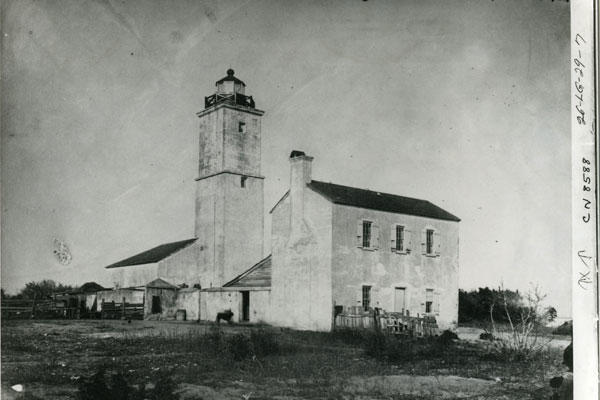The origin of Women’s History Month as a national celebration began nearly 120 years before the first Hispanic-American woman served in the Coast Guard and its predecessor services. Maria Mestre de los Dolores Andreu assumed the watch as the lighthouse keeper at the St. Augustine Lighthouse after her husband, Juan, passed away in 1859. With a yearly salary of $400 she not only became the first Hispanic-American woman to serve in the Coast Guard but also to command a federal shore installation.
Lighthouse keepers helped ensure a looming light on the horizon would be seen by sailors making them aware of a port or hazard to navigation. Lighthouse along shorelines emitted light to mariners warning them of a potential hazard or port while navigating a relentless and sometimes unforgiving sea in the 19th century was vital lifeline in maintaining safety at sea.
Lighthouses were not new in 1859 although the service was then called the Lighthouse Service. The history of the lighthouses began nearly 450 years ago when Don Pedro Menendez claimed Florida as part of Spain in 1565. Over time many lighthouses were built along the east coast of Florida. They were initially built for lookout stations and warning signal alerting mariners a sandy shoal was nearby.
The lighthouses gradually transformed into beacons specifically for marine traffic. A keeper’s responsibility was a difficult job as many of the lighthouses were in isolated locations. Because of the difficulty of the job, keepers of lighthouses held the highest respect with their local community and government.
“The best keepers are found to be old sailors, who are accustomed to watch at night, who are more likely to turn out in a driving snow storm and find their way to the light-house to trim their lamps,” said Isaiah William Penn Lewis, engineer to the U.S. Light-house Survey. “Because in such weather they know by experience the value of a light, while on similar occasions the landsman keeper would be apt to consider such weather as the best excuse for remaining snug in bed.”
The responsibilities of a lighthouse keeper were so significant in the early 19th century only the president of the United States could appoint and dismiss keepers. Keepers were commonly men; however, they often took the initiative to hire an assistant. It wasn’t unusual for keepers to have other jobs enabling them to make more money while leaving some responsibilities of lighthouse keeping to their wife or children.
Andreu received her experience as a result from assisting her husband who was the first Hispanic American to serve in the Coast Guard and its predecessor services. She took over in 1859 as keeper of the lighthouse and likely knew of the difficult tasks she was now responsible for after years of learning from her husband.
The responsibilities and duties for a lighthouse keeper were not for the light-hearted. Supplies for maintenance of the light were sent by the government regularly, but food wasn’t. This required the keepers to not only maintain the light but also to grow their own food and hunt. While keepers had to maintain their own sustainable food supply they also had to ensure the light was continuously lit the throughout night. Additionally, children who lived on the property needed to be educated. This all took place on an 18-mile long island which wasn’t easily accessible at the time.
Not only did lighthouse keepers have to take care of their families but also for mariners in distress. The effort to reach out to mariners in need of help became rooted into the service’s daily responsibilities.
“Civility should be enjoined as a duty to strangers wishing to examine the Lights, and, in case of shipwrecks near, every practical effort required to be made to render reasonable and efficient relief, and all due vigilance exercised to detect and expose every breech of the revenue laws in his neighborhood,” said Secretary of the Treasury Levi Woodbury in 1835.
Rendering relief to those in need became second nature to keepers of lighthouses standing the watch continuously.
Andreu stood the watch as keeper of the St. Augustine Lighthouse for three years. In 1862, the Civil War started and the light was extinguished fearing it would aid the Union Navy. The light was dimmed and Andreu moved away from the lighthouse but remained in the region.
“Maria Andreu’s leadership and perseverance as keeper of the lighthouse inspired generations of women to shine as female employees within federal service through her beacon of light,” said retired Lt. Cmdr. Marilyn Dykman, the first Hispanic American woman to pilot a Coast Guard aircraft. “Andreu opened the doors for women in the Coast Guard like myself and will carry over throughout many generations to come.”
Maria Andreu set the pace for not just for women serving in the Coast Guard but also for Hispanics. Today, Hispanic-Americans make up approximately 11 percent of the total service. Today, women in the Coast Guard continue honoring the service just as Andreu did 130 years ago. The legacy of Andreu’s courage continues into future generations of women serving in the Coast Guard just as it has over the previous 220 years.



























